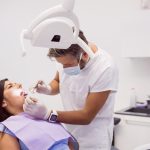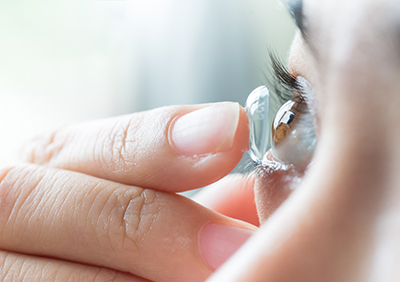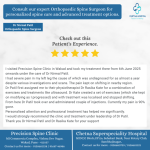Cosmetic contact lenses, also known as decorative or colored contact lenses, have become increasingly popular in recent years. From changing eye color for fashion purposes to enhancing costumes during festivals or cosplay, these lenses offer a fun and appealing way to alter your appearance. However, beneath their trendy and aesthetic appeal lies a potential risk to your eye health. When used improperly or purchased from unauthorized sources, cosmetic lenses can cause serious eye complications, including infections, corneal damage, and even permanent vision loss. In this blog, we explore the dangers of cosmetic contact lenses and how you can safely use them.
What Are Cosmetic Contact Lenses?
Cosmetic contact lenses are designed primarily to change the appearance of the eyes. Unlike prescription lenses that correct vision, cosmetic lenses focus on altering eye color, pattern, or size. Some may also offer a combination of cosmetic and vision-correcting functions, but many are purely decorative.
These lenses are widely available online, at beauty stores, or through unlicensed vendors. While they may seem harmless, improper use or poor-quality lenses can pose significant risks to your eyes.
Why People Use Cosmetic Contact Lenses
The reasons for using cosmetic lenses are varied:
- Fashion and Beauty: Many individuals use colored lenses to enhance their looks or match their outfits.
- Festivals and Celebrations: During events like Diwali, Halloween, or cosplay conventions, colored lenses are a popular accessory.
- Photography and Social Media: Influencers and social media enthusiasts often use decorative lenses for eye-catching photographs and videos.
- Temporary Change in Appearance: Some people simply enjoy changing their eye color temporarily for fun.
While these reasons are understandable, they do not justify compromising eye health. Using lenses without proper guidance can have serious consequences.
Common Dangers of Cosmetic Contact Lenses
1. Eye Infections
One of the most common and serious risks of cosmetic contact lenses is eye infection. Lenses that are contaminated with bacteria, fungi, or viruses can lead to severe eye infections such as keratitis or corneal ulcers. These infections can cause redness, pain, blurred vision, and excessive tearing. In severe cases, untreated infections can result in permanent vision loss.
2. Corneal Scratches (Corneal Abrasion)
Poorly fitted or low-quality lenses can scratch the surface of the cornea. This condition, called corneal abrasion, can cause intense discomfort, light sensitivity, and increased risk of infection. Repeated abrasions can weaken the cornea and lead to long-term complications.
3. Allergic Reactions
Some cosmetic lenses contain dyes and materials that can trigger allergic reactions in sensitive individuals. Symptoms may include redness, itching, swelling, and watery eyes. Using low-quality or unapproved lenses increases the likelihood of such reactions.
4. Reduced Oxygen Supply to the Eyes
The cornea requires oxygen to remain healthy. Thick or colored lenses can block oxygen from reaching the eye surface, leading to hypoxia. Reduced oxygen can cause swelling, discomfort, and long-term damage to the corneal tissue.
5. Vision Loss
In extreme cases, complications from cosmetic contact lenses—such as untreated infections, corneal scarring, or hypoxia—can lead to partial or permanent vision loss. This is a stark reminder that even lenses used for cosmetic purposes carry real risks.
Real-Life Impact
Across the world, hospitals report cases of patients developing severe eye problems after using cosmetic lenses purchased without medical guidance. Emergency visits often include symptoms like severe eye pain, redness, blurred vision, and discharge. Many of these complications could have been avoided with proper consultation, hygiene, and usage practices.
Safe Practices for Using Cosmetic Contact Lenses
If you decide to use cosmetic contact lenses, following proper safety measures is crucial:
- Consult an Eye Specialist: Before using any lenses, get a prescription and fitting from a qualified eye doctor. Proper fitting reduces the risk of corneal abrasions and other complications.
- Buy from Licensed Sources: Only purchase lenses from authorized and reputable vendors. Avoid unverified online stores or beauty shops that sell lenses without prescriptions.
- Maintain Hygiene: Always wash your hands before handling lenses. Clean and store them in recommended solutions. Never use tap water or saliva to clean lenses.
- Avoid Sharing Lenses: Sharing lenses increases the risk of cross-infection and can introduce bacteria or viruses to your eyes.
- Follow Wearing Schedule: Do not wear lenses longer than recommended. Remove them immediately if you experience discomfort, redness, or blurred vision.
- Avoid Sleeping or Swimming with Lenses: Doing so increases the risk of infections and eye damage.
Common Myths About Cosmetic Contact Lenses
Many people believe that cosmetic lenses are “safe” because they are widely available. Let’s address a few common myths:
- Myth 1: “They are over-the-counter, so they are safe.”
✅ Reality: Even lenses sold without prescription can cause severe eye problems if used improperly. - Myth 2: “You can share them with friends if they fit.”
✅ Reality: Sharing lenses spreads bacteria and infections, putting both users at risk. - Myth 3: “Colored lenses are only for a few hours, so they won’t harm eyes.”
✅ Reality: Even short-term use of low-quality lenses can lead to irritation, scratches, or infection.
Symptoms That Indicate a Problem
If you experience any of the following symptoms while using cosmetic contact lenses, remove the lenses immediately and consult an eye doctor:
- Redness or swelling of the eyes
- Severe pain or discomfort
- Blurred or hazy vision
- Watery eyes or discharge
- Sensitivity to light
Early detection and prompt medical attention can prevent serious complications.
Alternatives to Cosmetic Contact Lenses
If you love changing your eye color or enhancing your look, consider safer alternatives:
- Prescription Lenses with Cosmetic Options: Many eye specialists provide lenses that change color while correcting vision safely.
- Makeup and Eye Cosmetics: Eye shadow, eyeliner, and colored mascara can enhance appearance without risking your eye health.
- Digital Filters: For photos or videos, apps offer temporary eye color changes without touching your eyes.
Conclusion
Cosmetic contact lenses may seem like a harmless way to enhance your appearance, but the risks to eye health are real and significant. Eye infections, corneal damage, allergic reactions, and even permanent vision loss are all potential dangers of using lenses without proper guidance.
The key to enjoying cosmetic lenses safely is consultation, proper fitting, hygiene, and responsible use. Remember, your eyes are irreplaceable – fashion and fun should never come at the cost of your vision.
Protect your eyes, follow safety measures, and always prioritize health over trends. For any cosmetic or corrective lens use, consult a certified eye specialist first.













